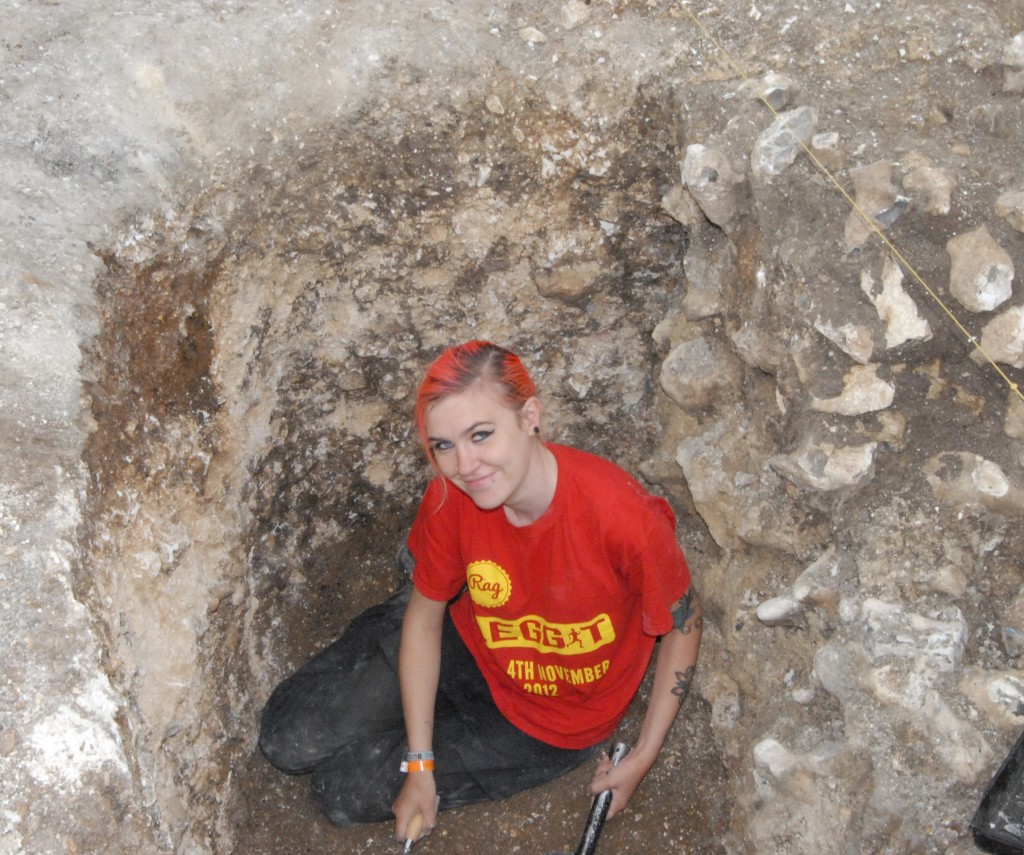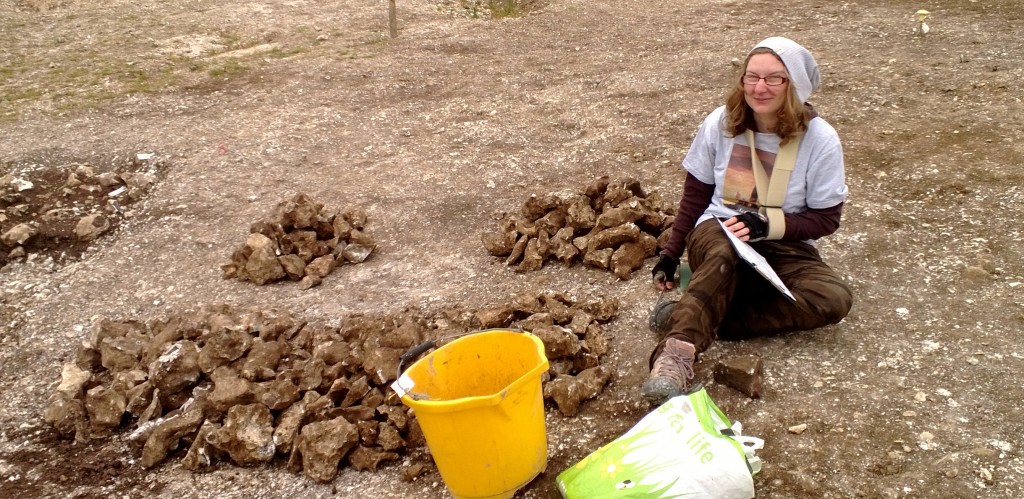Tuesday 18th June 2013
Day 15- Ever Changing Interpretations
There has been an update on the continued analysis of the perinate skeleton found last week as osteologists have come to site in order to take a better look at the skeletal remains and to assist in recovery. It has been determined that the age of the child was between birth and a year old but for a more precise age, the bones will be measured in a lab. In addition, today students Emily Rhodes and Lewis Busby recovered a beautiful fragment of blue glass from beside where the perinate skeleton was found. It is not currently known if this fragment was part of an overall object placed deliberately with the perinate or if it was simply a broken but of glass that happened to be beside it. Further complex and ranging interpretations are also occurring about the purpose the feature these objects are being found in.

Student Emily Rhodes working within the possible well, situated beside the Roman Villa. Courtesy of Bournemouth University.
When initial excavation of the feature began, the shape was indicative of a Roman well. However as the edges were further straightened and depth began to increase, it became clear that the shape was more square than round. Romano-British wells are usually almost perfectly cylindrical and there is one case of a square Roman well at a site in London. This is an extremely interesting feature and only further excavation and recovery will tell how its archaeology will contribute to the overall site!
Many of the features around the Roman villa are being excavated for a better understanding on what happened post-villa and its destruction. This research question has proved harder than initially anticipated! In one particular feature, there was a large rectangular area consisting of flint nodules and initial analysis was not able to tell the difference between if it was a rubble spread or a wall section. Excavation by student Charlotte Boyd, as pictured below, determined it was most probably a rubble spread. One section was targeted to take out the nodules and count them in order to calculate the overall extent of rubble. This can then be used to determine how much flint building material could have been used for nearby Roman buildings, such as the Villa.

Prehistoric and Roman Archaeology student Charlotte Boyd calculating the extent of the “rubble spread” beside the Roman Villa.